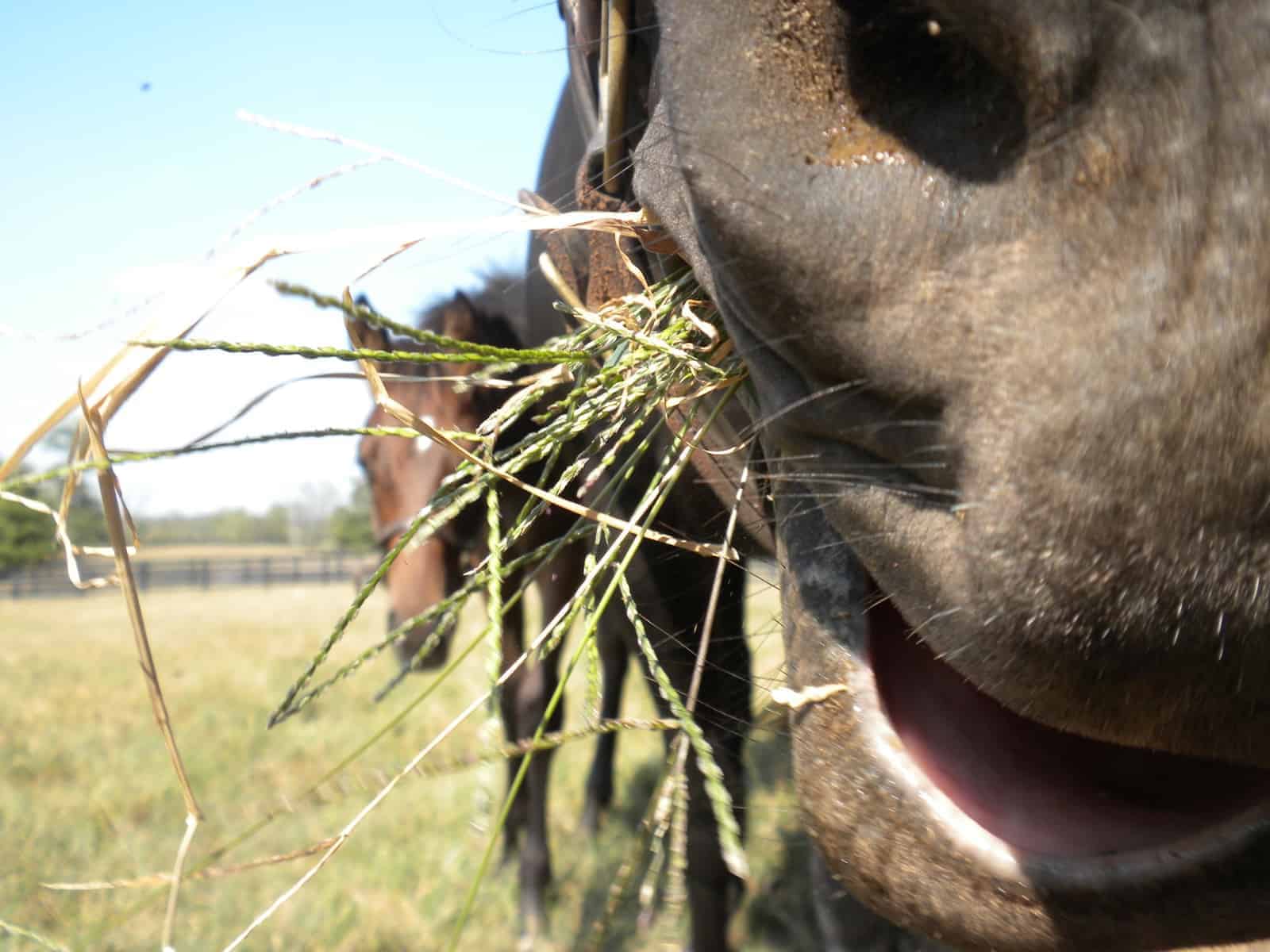Warm-Season Tips for Managing Cool-Season Horse Pastures

Mow only as needed.
Many farms mow pastures on a regular schedule, maybe every two weeks. Rigid schedules might simplify planning and labor needs, but can cost money in wasted labor and resources and lost forage production. Healthy pastures with minimal weeds should only be mowed to maintain quality, not aesthetics. As grasses mature, they produce a seed head which, while it’s needed for plant reproduction, reduces both forage quality and palatability. Mowing pastures to remove seed heads improves forage quality and encourages plants to fill in bare areas by tillering out. Once seed heads are removed from cool-season grasses, they will not grow again during the year. Also plan to mow when pastures are more than 10 inches tall, when horses are grazing unevenly, or when undesirable weeds are producing seed heads.
Remember: Fertilizers feed weeds, too.
Fertile soil is essential for good pasture health; however, weeds also benefit from fertilizers, particularly nitrogen. This means you must plan fertilizer applications carefully. Nitrogen applied during the fall or early spring encourages cool-season grass growth. However, warm-season weeds will flourish with summer nitrogen applications and are more likely to compete with desirable grasses. Prevent competition by not applying nitrogen to pastures dominated by cool-season grasses during the summer months. Other fertilizers such as phosphorous, potassium, and lime can be applied any time, weather-permitting, based on soil test recommendations.
Know your summer annuals.
Summer welcomes a host of new plants in pastures that might be unfamiliar to some horse owners. Many farm managers recognize ragweed and spiny amaranth (pigweed), for example, as common warm-season annual weeds that frequent pastures, but some warm-season annual grasses, such as crabgrass and yellow foxtail, might be less familiar. Crabgrass can be a blessing or a curse for horse pastures. Many pastures overgrazed in the spring and fall can support horses in the summer months because of crabgrass’ high yield and excellent forage quality. However, these pastures will be bare again in the fall once frost kills the crabgrass. Foxtail, on the other hand, has very poor forage quality and the seed head can cause significant irritations in the horse’s mouth. Because both forages are grasses, few, if any, herbicides can effectively eliminate them from a pasture while leaving desirable cool-season grasses in place. Learn to identify these grasses and, if they are prevalent in pastures this summer, consider renovating pastures in fall to eliminate them.
Prepare for fall improvements.
Ideally, most pasture improvements should be made in the fall when cool-season grasses are actively growing but many weeds are not. There are many steps to improving pastures and planning is key. Timing is critical when overseeding or re-establishing a pasture, so purchase seed and reserve a no-till drill ahead of time, because others will have the same idea during the fall. Herbicides might also limit when and if pastures can be seeded. Many herbicides safe for established grasses can still harm young seedlings, so if you’re planning to spray and seed, choose herbicides that control targeted weeds and have shorter reseeding windows or consider moving either seeding or spraying to the spring. Always read and follow all label recommendations. Summer is an ideal time to evaluate your pasture needs and begin planning for fall improvements.
What about warm-season pastures? Pastures in the southern United States dominated by bermudagrass, Bahia bahiagrass, crabgrass, and other warm-season grasses are in peak production in the summer months. Many of these grasses have high nitrogen requirements, so fertilize them, if needed, using stable nitrogen forms. In these pastures, start planning now for planting winter cover crops, such as annual ryegrass.
Take-Home Message
Pastures are dynamic and require changing management strategies based on time of year, weather condition, soil type, and use. Contact your local county extension agent or farm supply store for more details on maintaining or improving your pastures. Not only do well-maintained pastures look stunning, they provide quality grazing for horses, reduced hay and grain needs, and are environmentally friendly.
Krista Lea, MS, coordinator of UK’s Horse Pasture Evaluation Program, provided this information.
More information on Gluck Equine Research Center and UK Ag Equine Programs.
Written by:
University of Kentucky College of Agriculture, Food, and Environment
Related Articles
Stay on top of the most recent Horse Health news with












